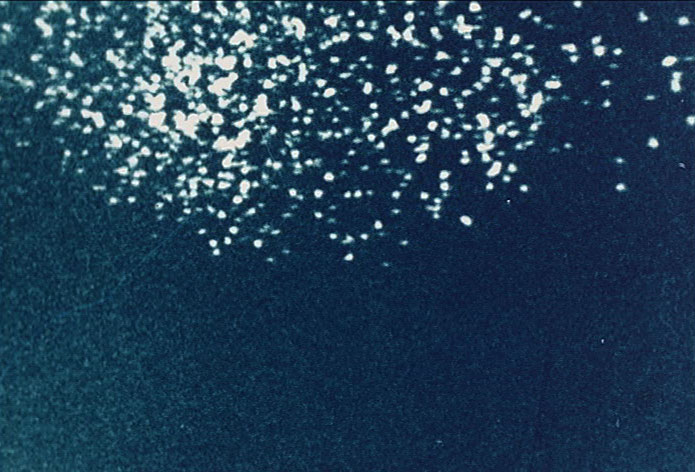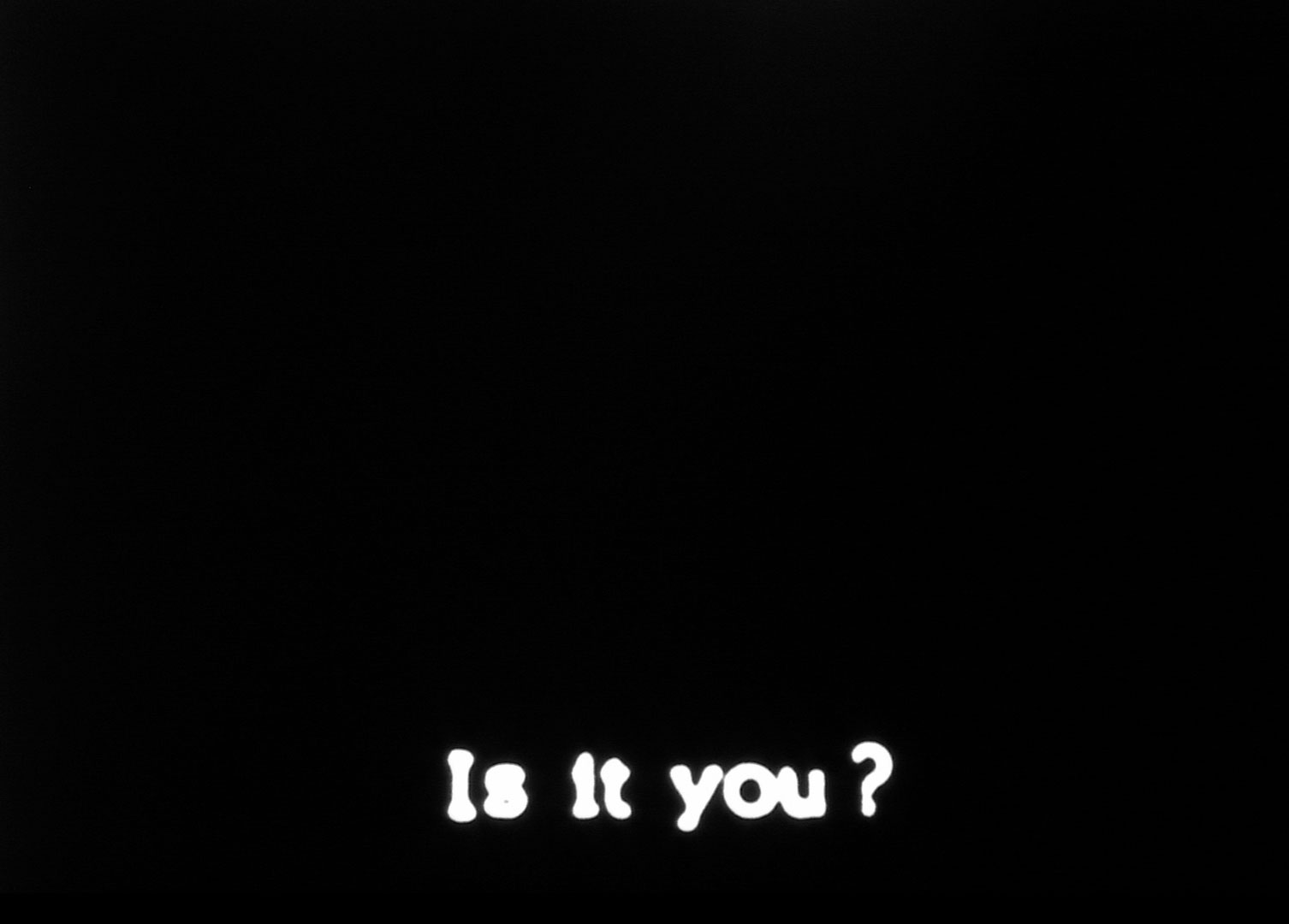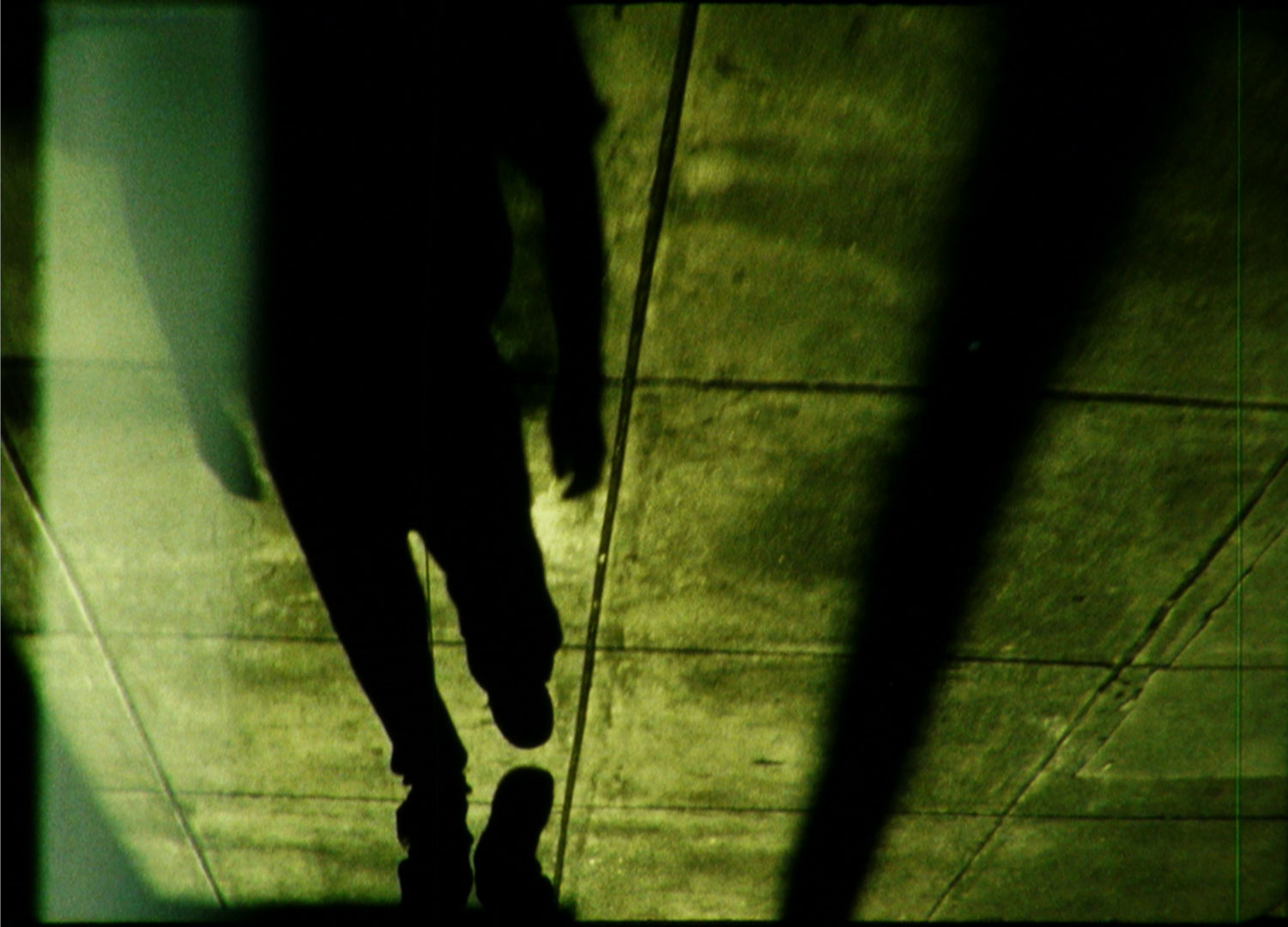Notes written for the occasion of By foot-candle Light: Mary Helena Clark in Person. May 14th, 2015 @ Farewell Books.
The showcase screening, as a convention that facilitates a deeper understanding of a single filmmaker’s body of work, remains for many viewers of experimental cinema an essential cinephilic experience. The films of Mary Helena Clark are especially suited to this mode of presentation, not least of all because intriguing patterns and unexpected points of connection can emerge out of their more mysterious qualities in the single-person screening. Given the value of this promise of discovery and in-depth exploration, I offer here not an extended analysis but rather a brief consideration of one important aspect of Clark’s cinema, namely her use of sound. My remarks are intended to lead you to listen to her films as carefully as they ask to be seen. I begin with a handful of descriptions.
*
In And the Sun Flowers (2008), a poorly-tracked, VHS-tape image of what might be a flower pattern is combined with the rising, magnetic buzz that VCRs generate. Following a series of rapid notes, perhaps struck on a xylophone, a voice-over begins to offer an exercise in conscious imagining, setting a scene that the listener, addressed directly as “you,” is expected to not only visualize but also experience sensorially. According to the narrator, the listener will be hearing the wind and sensing its presence physically, “inhaling from the sun the sound of my voice,” and “feel[ing] warm and protected.” As he speaks, the continued hissing and buzzing of analogue video form a sonic background to his clearly-articulated words.
Orpheus (outtakes) (2014) offers up a diverse selection of aural phenomena within its short running time: projector sounds, the beeping of what could be an answering machine, ambient room tone, a door creaking open and shut, unseen voices asking unanswered questions, rain changing over into an audience clapping, and various textural sounds associated with scratchy photochemical film.
The opening of The Dragon is the Frame (2014) includes a shot of a shadowy street scene, with cars visible in the background, and a shot of a red traffic light and a tree with crimson leaves. They are accompanied by a transient sound of an airplane and the rhythmic, high-pitched beeping of an audible pedestrian signal. At first, the sounds carry over into a new setting, a municipal bus where we see a blonde head of hair, shot from behind the seated figure. But soon the repetitive signal, heard amidst outdoor traffic sounds, is replaced by the vehicle’s interior noises. What was recorded inside the bus becomes the next sound bridge in the film, as a scrolling text (whose source is later identified as Isaac Richard Pool’s 2010 multimedia work Transfer Progress) appears onscreen. The text is a first-person, poetic declaration of motives and principles, focusing on fashion and style, and it is soon juxtaposed with a brief, spoken monologue that asks the listener to imagine a vividly described scenario. The monologue ends with the line, “And then they say this,” but it is followed by silence.
The Plant (2012) includes the ringing of a landline telephone, similar to the one heard at the end of Coppola’s The Conversation (1974).
Eventually, in Sound Over Water (2009), a sonar signal emerges on the soundtrack.

There are three especially notable features of Clark’s sound design. The first is her use of excerpts from monologues and dialogues uttered by people we never see onscreen. The second is her interweaving of sounds from interior and exterior spaces, which are synchronized with and desynchronized from her moving images at apparently irregular intervals. The third also involves juxtapositions and transitions, between isolated sounds, many of which have a distinct pitch identity, and texturally “thick” clusters of noises, usually operating across a wide band of frequencies.
Focusing on the narrative fiction film, Michel Chion has famously used Pierre Schaeffer’s term acousmatique to discuss the psychological effects of offscreen sound. Chion often places emphasis on the unsettling aspect of acousmatic sounds, noting that “when the source has not been seen, the sound strikes us more abstractly and in some cases can become an enigma.”¹ While Clark’s films lack the more familiar narrative structures of Chion’s preferred modes of cinema, some of the acousmatic fragments in her work are deeply enigmatic, having been appropriated from contexts that remain opaque to us. But notably, Clark is not simply attempting to mystify with her acousmatic voices – she also includes language that is transparently clear. When the voices in And the Sun Flowers and The Dragon is the Frame ask us directly to visualize scenes that contain quite specific material and behavioral details (Chion calls these “phantom images”) but are mysteriously motivated, a tension emerges between two tendencies within her work: the accessibility and clarity of its verbal descriptions (often enhanced by a speaker’s use of direct address to the viewer) and the private, perhaps encrypted meanings of each film as a whole.
Clark plays descriptive transparency off of the more semantically elusive elements of her cinema, and her films explore another, related form of interplay through their manipulations of source sound. For Chion, the acousmatic voice can seem to be “wandering along the surface [of the image], at once inside and outside, seeking a place to settle,” in part due to the fact that it emanates from the same speakers that allow us to hear sounds with diegetic, onscreen sources.² When her films present sounds that are synchronized with onscreen imagery but which periodically switch to desynchronized sounds coming from other, unseen locales and sources, Clark places us in an unstable, varying relationship to the “here” and “elsewhere” of each represented site. For brief moments or extended stretches, the meshing of sound and image might immerse us in a location, such as the municipal bus in The Dragon is the Frame, but that more stable grounding in a particular place is inevitably disrupted by an aural change (from an interior space to an exterior one, for instance) that is not immediately accompanied by a new image. In my view, these audiovisual destabilizations serve as a correlative to our experiences of “tuning in and out,” of being present and absent, psychologically and physically, at any given moment in our everyday lives. Clark’s cinema is continually taking us to specific sites and half-removing us from them. There is an existential dimension to this situation, and it leads me to the third item in my inventory of her sounds.
Part of what makes the beeping crosswalk signal, the ringing telephone, and the passing airplane stand out is their placement within montage arrangements that also include periods of silence and various humming, rumbling, or droning background noises. At times, an isolated unit of sound might produce a magnetic pull on us as listeners, while at other moments, more constant, flatline noises, commonly associated with a sense of infinite extension, can seem to fade into the background of our attention, even as they remain ongoing on the soundtrack. To get at the larger significance of these aural shifts, I refer to Chion’s explanation of his term “fundamental noise”:
The continuous and undifferentiated sound into which symbolically all the other sounds of the film can fall or dissolve; the sound into which everything in a given film tends to be reabsorbed and pacified, either by covering over all other sounds at a given moment or by revealing itself as the background noise we hear when all the other noises fall silent or return to it. A film’s fundamental noise (which always has a ‘complex mass’ to use Schaeffer’s term, i.e., no precise pitch) is often both a metaphor for the noise of the movie projector and a metaphor for the background noise of life. It is a metaphor of equalization, in that it creates the feeling that all the film’s sensations and feelings will become lost in it, ‘like tears in rain.’³
I would modify Chion’s formulation a bit so that it encompasses more than the metaphorical function of this particular type of “complex mass.” When fundamental noise reminds us of the machinic sounds of the film projector (reproduced at the outset of Orpheus (outtakes)), it certainly plays a reflexive role. But more frequently in Clark’s cinema, fundamental noise represents or evokes the soundscapes of daily life. As an aural envelope, it immerses and contains us within its parameters. As an auditory presence, it not only surrounds but can even seem to be within us, as when our bodies sense with immediacy and directness a low-frequency rumble that we strain to hear. This sound is not just a metaphor because it can be used to simulate and intensify aspects of our commonly shared aural and corporeal experiences.
The most interesting affinities between the three sonic features I have been describing are psychological. Just as the affective and the sensorial might be “lost” in fundamental noise, other boundaries – between interior and exterior spaces, between the autonomous self and everything we take to be external to it – can seem vulnerable to being discomposed, even if only mentally. Set against the sounds that connote the possibility of dissolution, of being overtaken by the absorptive nature of the complex mass, is the films’ stark isolation of the individual sound. The acousmatic voice, for example, can give the impression of being adrift in an immaterial void and seeking a “place to settle.”

Generally, Clark’s films convey an itinerant, searching quality, while also being grounded in the representation of particular places. More specifically, their deployment of sound suggests to me states of connectedness and detachment, and I see her cinema as being concerned with the precariousness of any one mode of response to the world, be it involvement or withdrawal. The primacy of this concern varies from film to film, of course, coming to fore or receding in relation to other dimensions or themes. Discover the intricacies of her films at her screening, in the public space where your viewing experience can be, appropriately, both individual and collective.♦
¹ Michel Chion, Film, A Sound Art, trans. Claudia Gorbman (New York: Columbia University Press, 2009), p. 465.
² Michel Chion, The Voice in Cinema, trans. Claudia Gorbman (New York: Columbia University Press, 1999), p. 24.
³ Chion, Film, A Sound Art, p. 478.
Federico Windhausen is a film scholar and programmer based in Buenos Aires, where his current research and writing on Argentine experimental film has been partially funded by a Creative Capital | Warhol Foundation Arts Writers Grant. Beginning in July 2015 he will be a writer in residence for LUX, and later in the year he will present the films of Marielouise Alemann as part of TIFF Bell Lightbox’s Free Screen series in Toronto. He is also editing A Companion to Experimental Cinema for Wiley-Blackwell.
